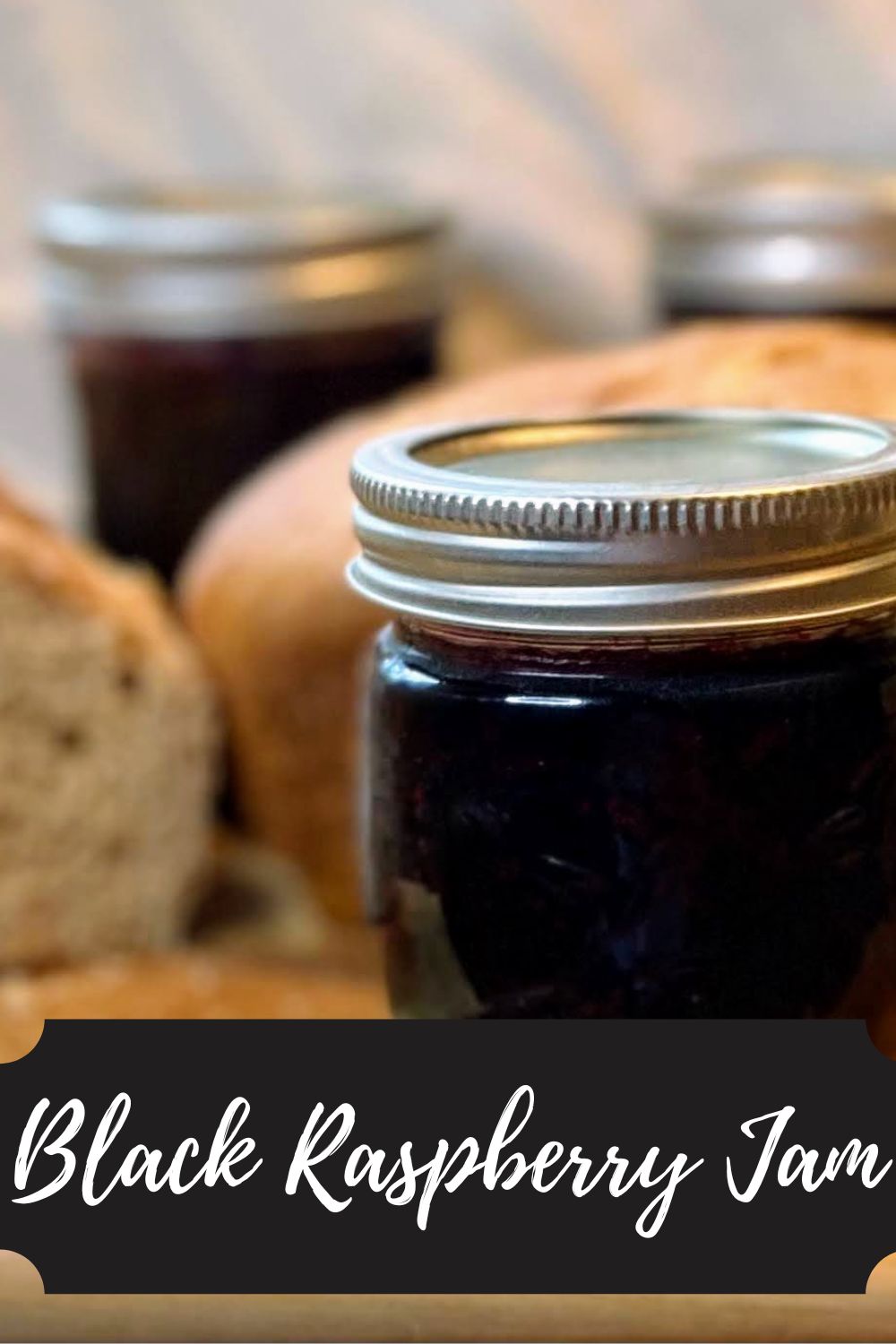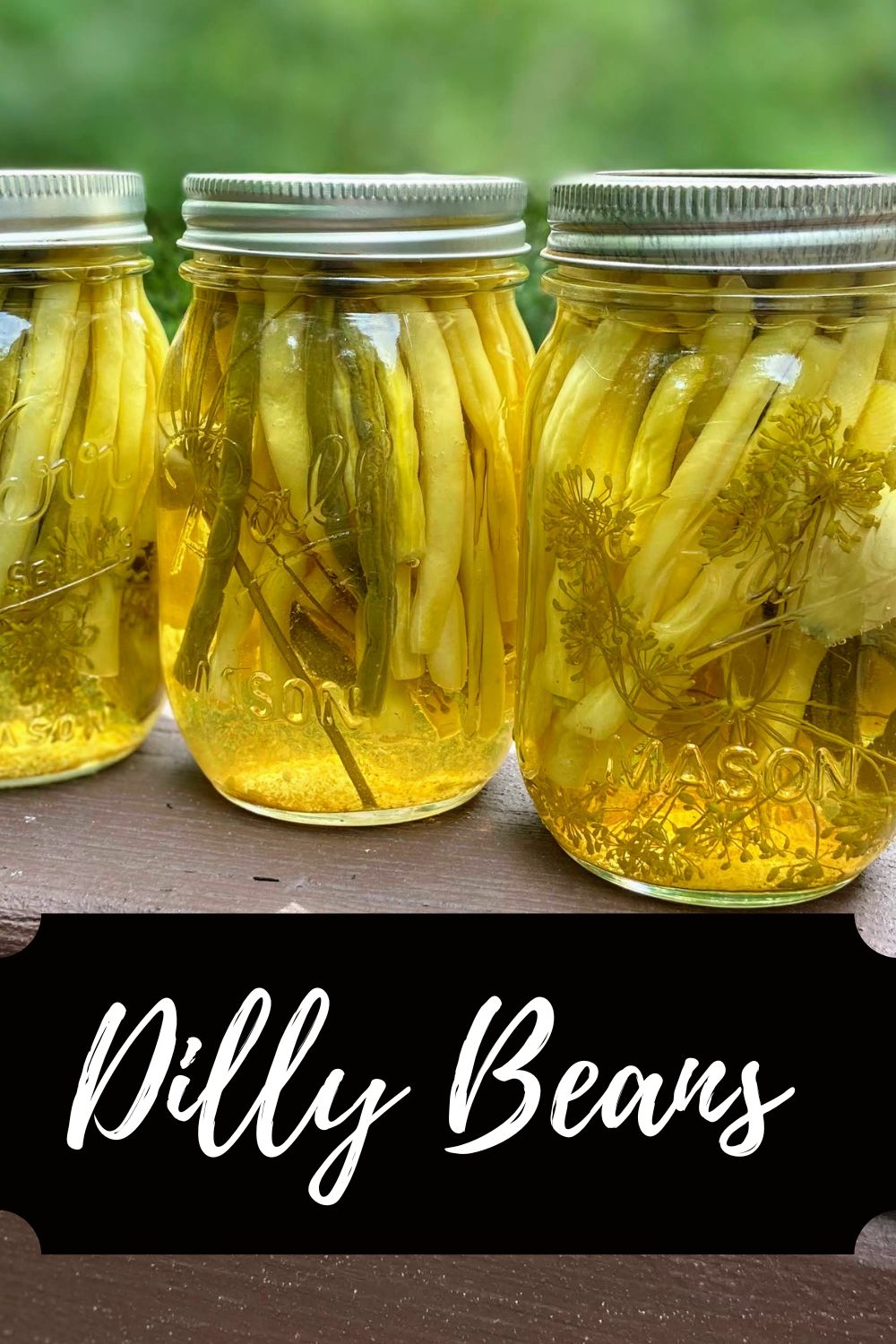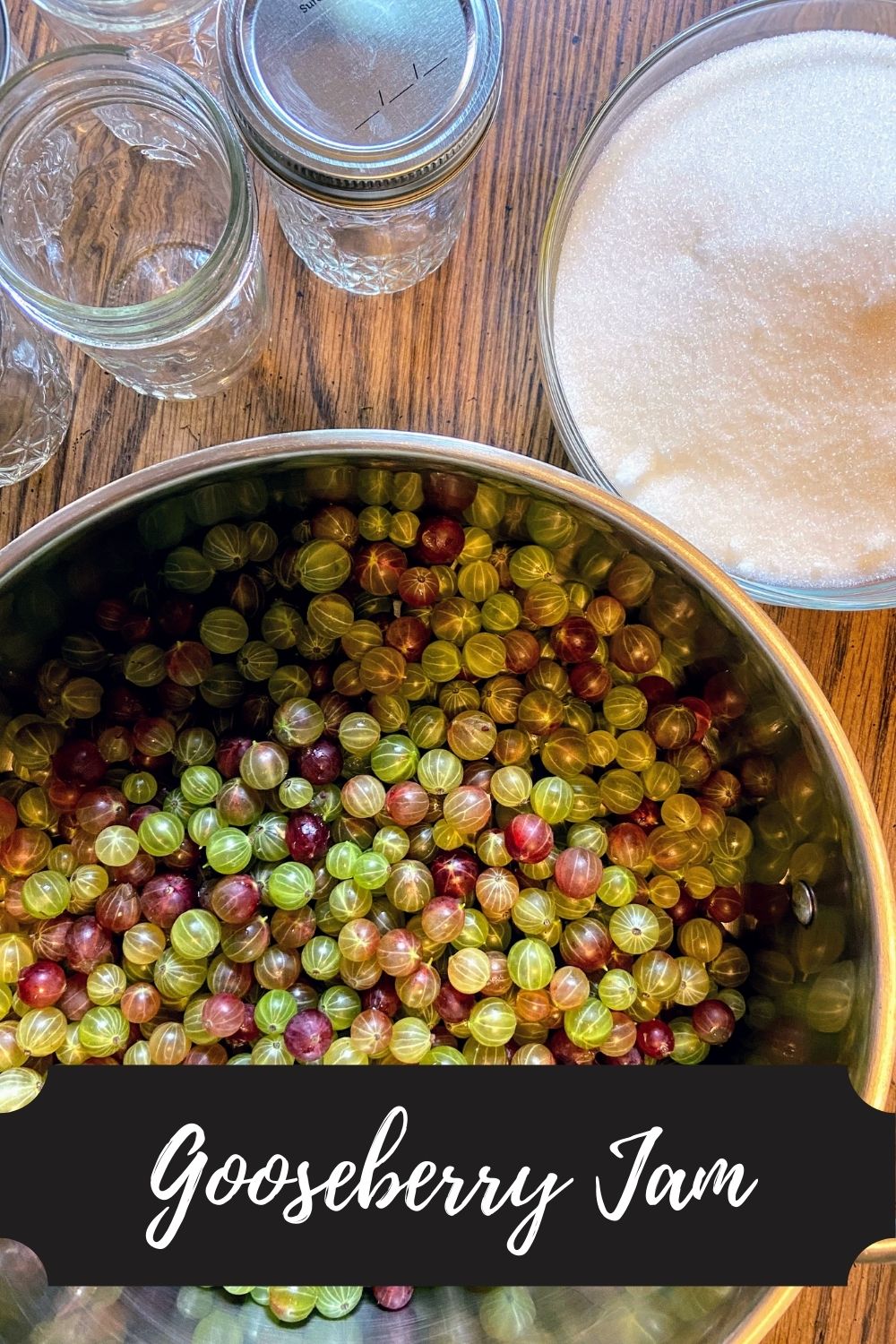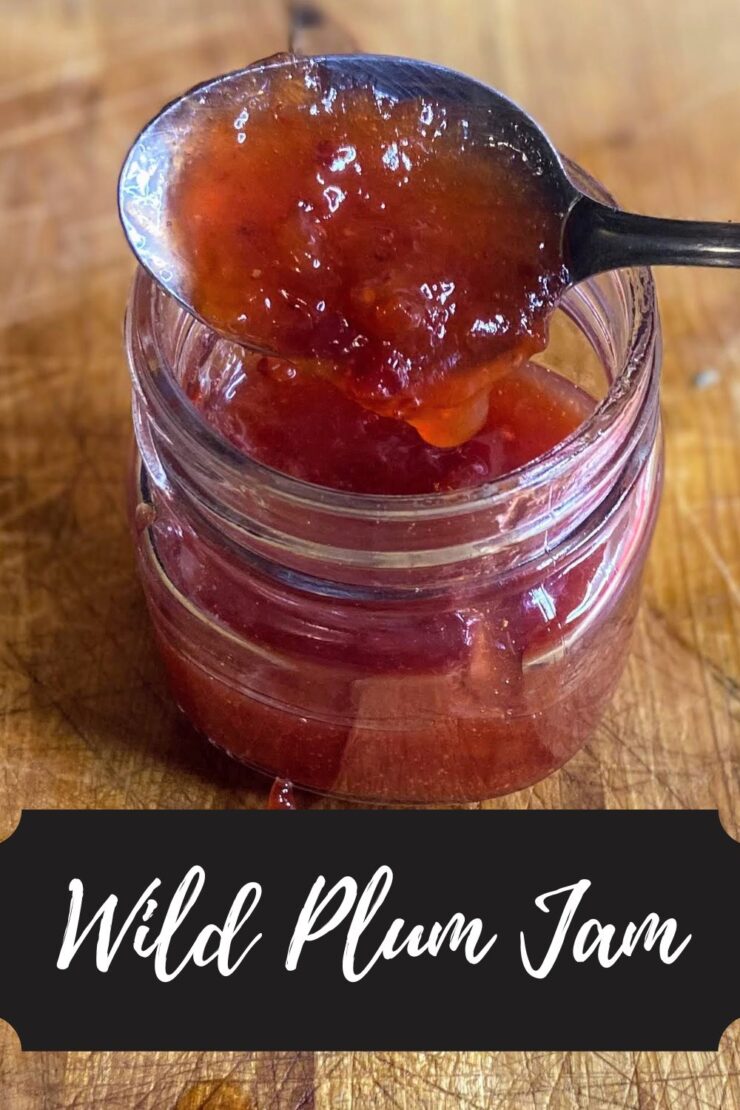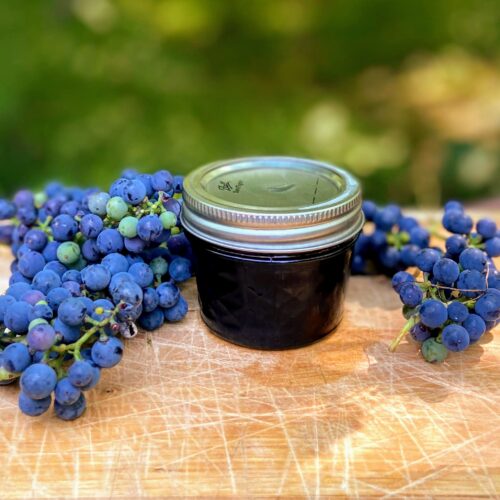This season, I have become obsessed with searching for wild plums. I don’t know if it has been a good season for them (Apparently they don’t like rain at all in June and July? Ha!) or if I just hadn’t noticed them before, but I have suddenly become aware of an abundance of wild plum trees throughout the area in Wisconsin. And if you know me, when I see wild edibles, I harvest (free food!) And if it is fruit, I will be making jam out of it. In this case, wild plum jam.
I keep asking the Mr. why people don’t eat them, and he said that they likely don’t know to identify them. From afar, he thinks that many assume they are crab apples and think crab apples aren’t good (not true, by the way!). Boy, if that’s the case, they sure are wrong. They are sweet and delicious and plentiful! You can learn more about identifying wild plums (American Plums) here.
I had to start making jam quick. And I hope you do too, but I do want to share that I did not grow up in a canning household. I learned about ten years ago, as soon as we bought our home and started our first garden. And while I had some support of my mother in law (thank you so much!), I learned SO MUCH from reading. If you are a first generation canner like I was, let me share some of my favorite resources.
My Favorite Resources
Ball Complete Book of Home Canning: This book gives you a good idea of all the basics from the people who know canning forwards and backwards. I love that I can dig in and get just what I need.
Not Your Mama’s Canning Book: Modern Canned Goods and What to Make with Them: This book is SO FUN. It has some out of the ordinary recipes. We especially love the tomato soup and seasoned black bean recipes.
Can It and Ferment It: More Than 75 Small Batch Canning and Fermentation Recipes for the Whole Year: I dig the simplicity of this book. It is also by what I would consider to be a local author, which is doubly cool. Small batch is great for anyone just giving canning a try!
And finally, the National Center for Home Food Preservation has all the information you need for all sorts of food preservation, not just canning. I reference it often!
But enough about resources, you want to can right? (But seriously, I am going to give you the basics. If you are a newbie (Yay!), head to any of those resources for more detailed information)
Your Wild Plum Jam Ingredients
For approximately a half pint, you’ll need
- 1 cup rinsed and pitted plums, halved or quartered
- ½ cup sugar
- ½ tablespoon lemon juice
I say approximately because let’s be honest, it isn’t perfect. You might get one 1/2 pint for every cup of fruit, but it might be a little less. I always prepare as many jars as I have cups of fruit and go from there.
Yes, that’s it! No, you can’t change out the sugar for a different sweetener using this recipe. Canning is finicky like that. I like to do at least 5 cups of plums but have done up to 8 cups.
The Prep Work
Fill the canning kettle with enough water that the jars will be covered by at least 2 inches of water. More is better in this case so overestimate. Begin to heat over high heat. Place the canning rack so that it is hooked over the side of the canner and put clean jars on it to keep them warm.
Set the clean rings aside. I like to simmer my lids on low low heat in a small saucepan. Not necessary, but I like to think it helps them seal better.
If you have not already done so, measure out the sugar and the plums.
The Wild Plum Jam Making
In a large, preferably shallow kettle, smash the plums with a potato masher. I actually love to use my fermentation packer to crush fruit in jams. Stir in the sugar and lemon juice. Begin to heat over medium-high heat, stirring often. I like to smash more as they are cooking down. After they haven’t softened (about 10 minutes), puree the plums using an immersion/stick blender. What’s cool about this step is you can decide how much or how little you want to break down the plums. Then keep cooking and stirring.
Your end goal is to reach the gelling point. There are lots of tests for this, but I prefer the temperature test. If you are at sea level, the gelling point is 220 degrees. For every 1000 feet of elevation, you subtract 2 degrees. For me, the gelling point is 218 degrees. Don’t have a decent food thermometer? Check out the National Center for Home Preservation website for other ways of testing for the gelling point.
It takes longer to reach the gelling point than I think it should. It also goes from needing 3 degrees to reaching the gelling point fast. You can get complacent while you are waiting and suddenly hit the temperature, so I am trying to warn you 🙂


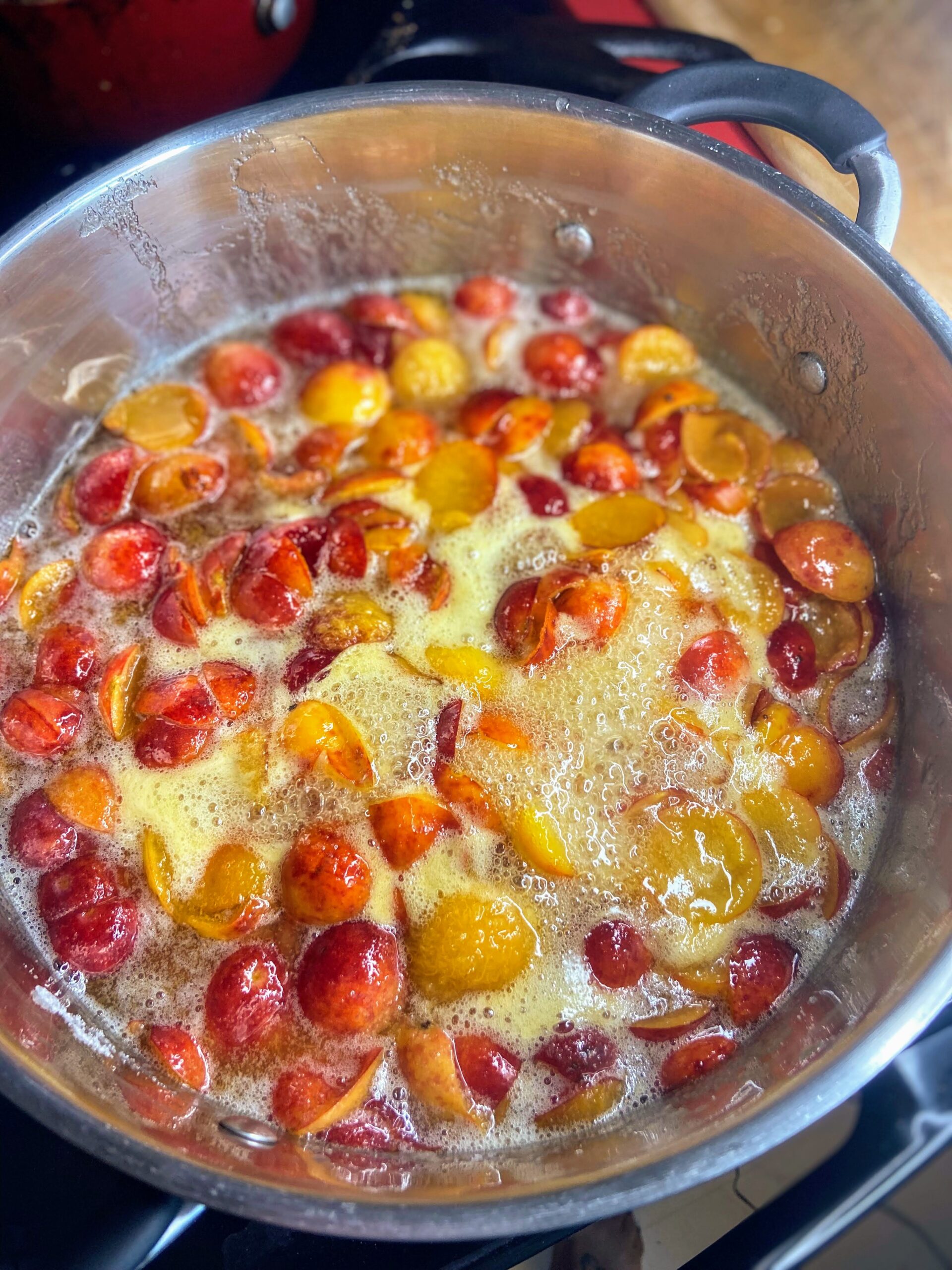
Time to Can it!
Once the wild plum jam has reached the gelling point, remove it from the heat. Ladle into prepared jars, leaving ½ inch head space. Wipe the rims of the jars with a damp, clean cloth, add lids and rings, tightening to fingertip tight. Place in the canner, increasing the heat to high. Once the canner reaches a boil, process for 15 minutes. Remove from heat and allow jars to cool in the canner over 5 minutes. Remove from canner, placing on the counter. Listen for the ping of the lids over the next 12 hours. Sealed jars are self stable. If any jar doesn’t seal, simply place it right in the refrigerator. It is recommended that you store jars with the rings off or very loose. I very between the two.
Note: You can skip the processing step all together if you feel more comfortable. If you do so, the jam will need to be stored in the refrigerator. The process of water bath canning creates a self-stable jam. That is, a jam that can be stored on the shelf.

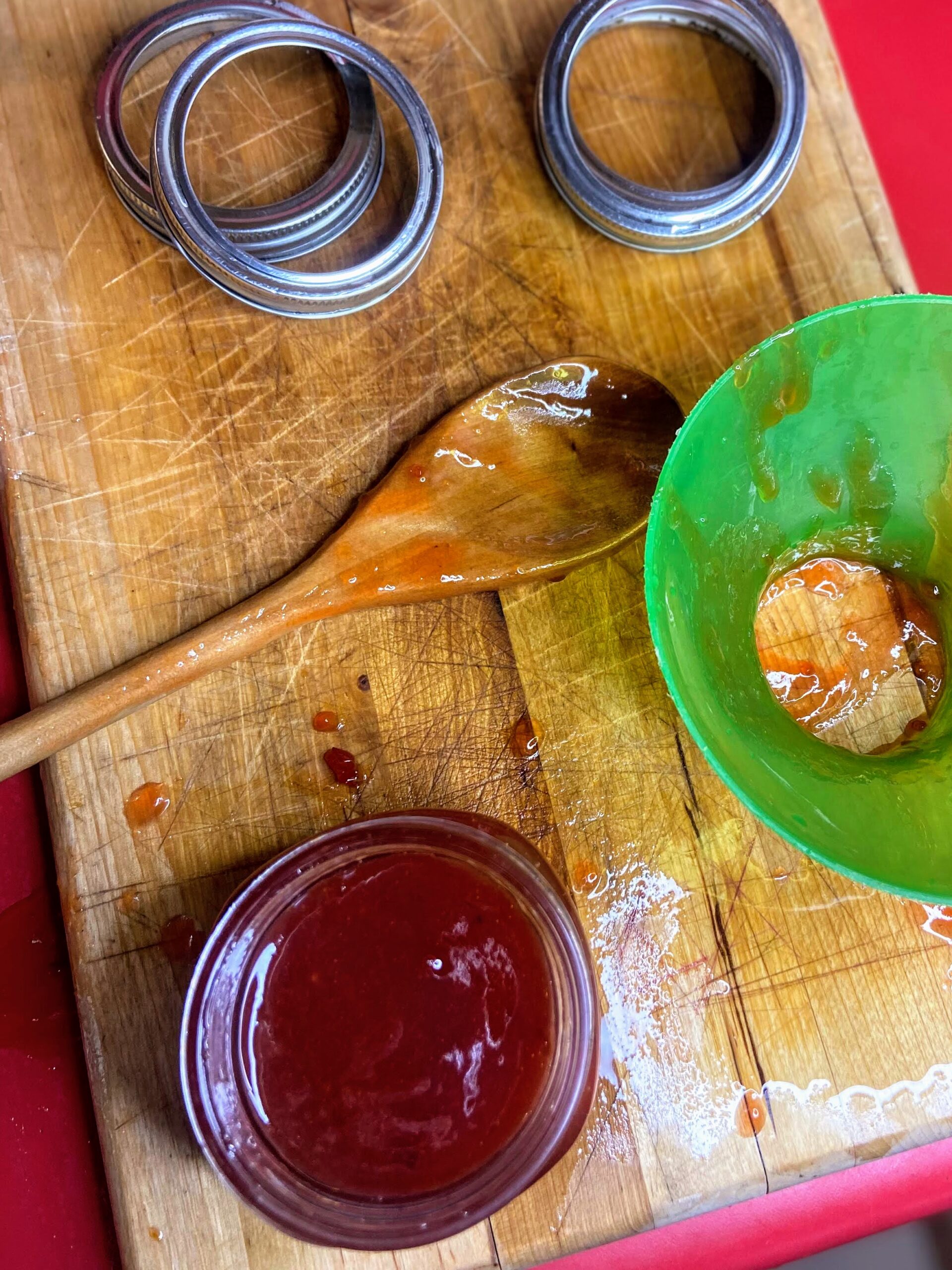

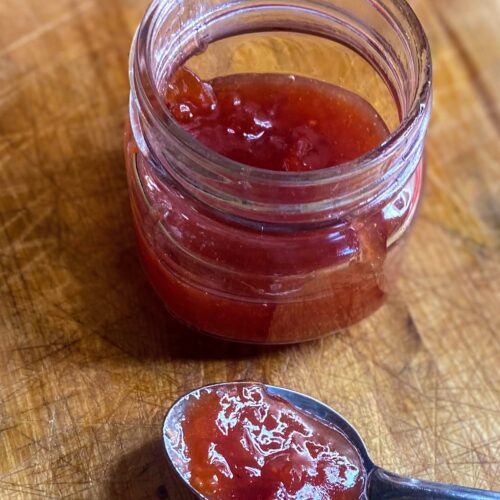
Wild Plum Jam
Ingredients
Per 1/2 pint jar (approximately), you will need:
- 1 cup halved and pitted wild plums
- ½ cup sugar
- ½ tablespoon lemon juice
Instructions
- If you have not done so, clean and measure out the wild plums. For each cup of plums, measure out 1/2 cup of sugar and 1/2 tablespoon lemon juice. Set aside.
- Wash and sanitize the same amount of pint jars as cups of cleaned plums. Wash and clean rings and lids. Keep warm. Fill the canner with enough water to cover the jars by at least 2 inches of water. Cover and heat on high. Watch the temperature, you want a simmer but not a boil when you place the jars in the water.
- In a large, shallow kettle, smash plums with a potato masher. Stir in sugar. Begin to heat over medium-high heat, stirring often. Smash more as they are cooking down.
- After approximately 10 minutes, blend jam mixture with an immersion blend to desired texture.
- Heat to 8 degrees above the boiling point of water. If you are at sea level, the gelling point is at 220 degrees. For every 1000 feet of elevation, you subtract 2 degrees.
- Once the jam has reached the gelling point, remove from heat. Ladle into prepared jars, leaving ½ inch head space. Wipe rims of the jars with a damp cloth, add lids and rings, tightening to fingertip tight. Place in the canner, increasing the heat to high. Once the canner reaches a boil, process for 10 minutes. Remove from heat and allow jars to cool in the canner over 5 minutes. Remove from canner and allow to rest for 12 hours before storing.
Notes
Looking for other canning recipes?
You can check out my canning and perserving page or see if any of these fun recipes speak to you!
